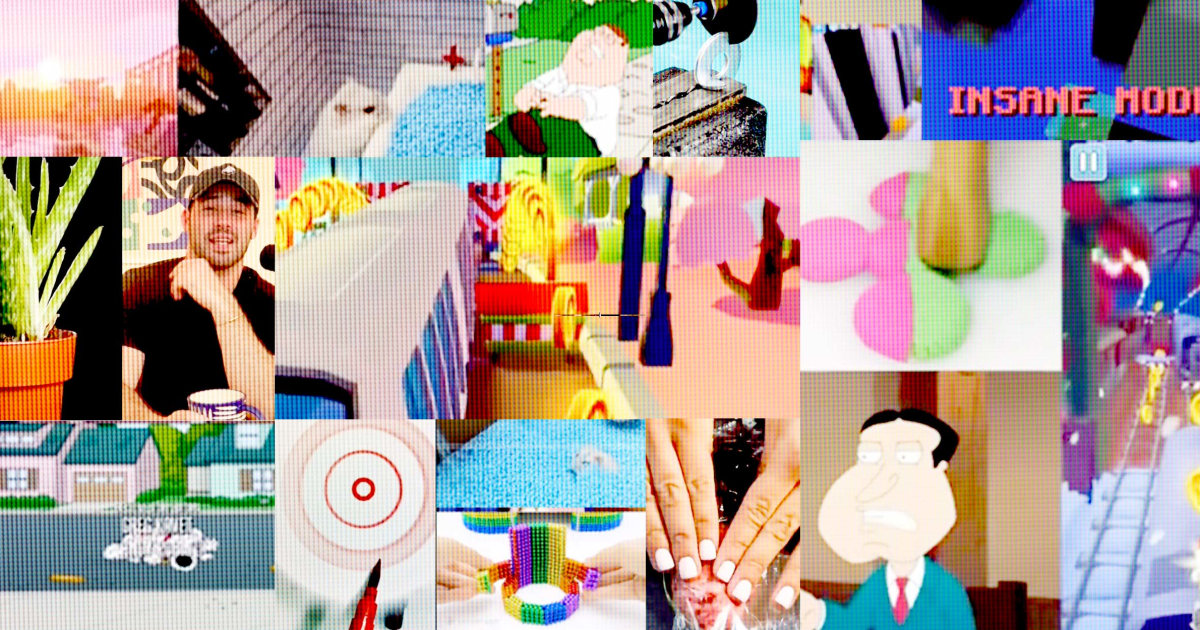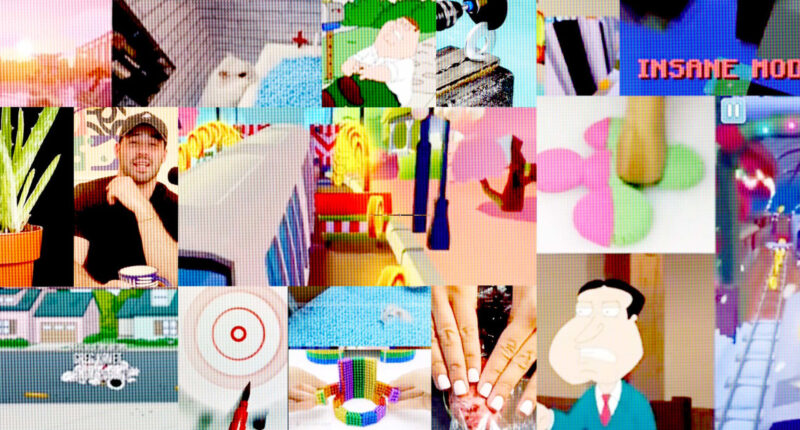
It’s content that could be born only out of TikTok’s frenetic video onslaught.
So-called sludge videos have flourished on the app and other parts of the internet in recent months, offering viewers split-screen looks at two, and sometimes even three or four, videos at once.
The videos are typically compiled from two or more unrelated sources: a popular game component such as Subway Surfers, an automated voice reading a confessional Reddit story time, an ASMR clip such as a bar of soap being cut or a scene from a cartoon or a television show.
To unsuspecting users, the videos can be nuisances, but to “sludge fans,” the overstimulating videos offer solace.
“NOT ENOUGH STIMULATION. I NEED SOAP VIDEOS,” a user commented on a sludge content video.
“my mind feels whole,” another wrote.
Experimental editing styles are not new to TikTok; #corecore videos, for example, are also collaged, and they are viewed as a poetic storytelling form. By comparison, sludge content veers far from literal meaning and leans, instead, into an abstract chaos produced by mixing different audio-visual content.
Some sludge content videos have neatly split screens, while others feature dizzying patchworks of videos that overlay one another. In the latter variation, videos continue to pop up on the screen over the collages.
The origins of sludge content are unclear, but it is linked to an online tradition of repackaging recognizable bits of the internet, said Nick Seaver, the director of the Science, Technology, and Society Center at Tufts University in Massachusetts.
Deep fried memes, for example, involved transforming popular images with heavy filters and color saturation, he said.
There is “a history of putting copyrighted content on YouTube but other videos around it so that the copyright filter doesn’t get triggered,” according to Seaver.
“One thing you clearly are seeing here is a kind of imitation, people recognizing that other videos like this exist,” he said.
On the consumer side, part of sludge content’s appeal is its escapist nature. The videos are rife with distractions.
“It functions as something playful, that can take your mind off things, and doesn’t require you to dive deep,” said Andreas Schellewald, a doctoral researcher of social media at Goldsmiths, University of London. “You can sit there and watch things unfold in front of your eyes.”
Some users who are wary about the rise of the genre expressed concerns that sludge content reflected a declining attention span among TikTok users and that it promoted “brain rot.”
“TikTok has ruined the average attention span so rapidly,” a user captioned.
“What’s going on with this?” another creator said in a video. “Our attention span is so low we have to be distracted from the 30 second video we’re watching by another 30 second video in the video?”
Such discourse has also led to jokes that the only way to get someone’s attention IRL (in real life) is to play a video clip of Subway Surfers, a signature of sludge content:
“POV: I notice I’m losing your attention during rounds,” a user captioned a video simulating an interaction in which he would display a game to get someone to focus on his medical lecture.
Seaver said that while concerns about how social media content affects the brain are not unfounded, it is common for conversations about attention span to become moralized “to talk about the way people ought to behave.”
“I don’t think it’s very useful to point to, like, any new media and be, like, see, ‘This is evidence that we’re falling,’” he said. Sludge content “is made by someone for some reason. It’s not just, like, a natural phenomenon that tells us something about ourselves.”
Source: | This article originally belongs to Nbcnews.com









